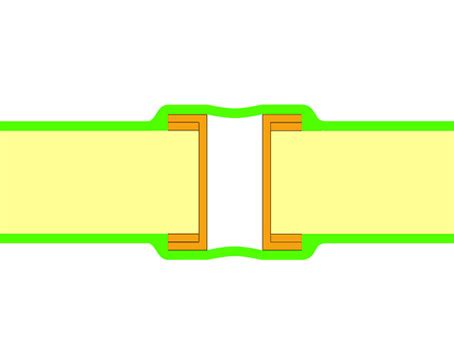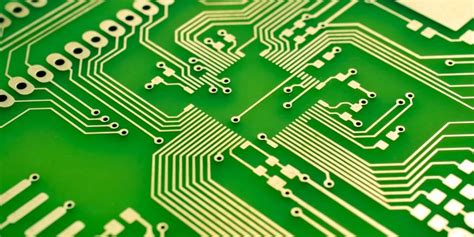
ALL ABOUT FLEX PCB
-
What is via covering in PCB?
Posted by
–
 Read more: What is via covering in PCB?
Read more: What is via covering in PCB?Introduction to Via covering Via covering is a crucial process in the manufacturing of printed circuit boards (PCBs) that involves filling or plugging the vias with a non-conductive material. Vias are small holes drilled through the layers of a PCB to create electrical connections between different layers. While vias are […]
-
Where to place the PCB in the oven?
Posted by
–
 Read more: Where to place the PCB in the oven?
Read more: Where to place the PCB in the oven?Introduction to PCB Placement in Reflow Ovens Printed Circuit Board (PCB) assembly is a crucial process in electronics manufacturing, and reflow soldering is a widely used technique for mounting surface mount components onto PCBs. Proper placement of the PCB in the reflow oven is essential for achieving optimal soldering results […]
-
 Read more: White paper – suitability of an enhanced low melting point alloy for a handheld device.
Read more: White paper – suitability of an enhanced low melting point alloy for a handheld device.Introduction to Low Melting Point Alloys and Their Applications Low melting point alloys, also known as fusible alloys, are metal alloys that have a melting point below 450°F (232°C). These alloys are commonly used in various applications, such as soldering, casting, and creating custom-shaped components. The low melting temperature of […]
-
What is the Shipment Date?
Posted by
–
 Read more: What is the Shipment Date?
Read more: What is the Shipment Date?Importance of the Shipment Date The shipment date is important for several reasons: Inventory Management: The shipment date helps businesses plan their inventory levels. By knowing when products will be shipped out, companies can ensure they have sufficient stock to fulfill orders without overstocking, which can tie up capital and […]
-
What is Inner Layer Pad Insulation?
Posted by
–
 Read more: What is Inner Layer Pad Insulation?
Read more: What is Inner Layer Pad Insulation?What is ILPI Made Of? ILPI is typically made from a combination of materials, including: Fiberglass Mineral wool Polyester Recycled cotton Other synthetic fibers These materials are often blended to create a product that offers superior insulation properties while remaining lightweight and easy to install. Fiberglass Fiberglass is one of […]
-
What is an extra press cycle?
Posted by
–
 Read more: What is an extra press cycle?
Read more: What is an extra press cycle?Why is an Extra Press Cycle Necessary? There are several reasons why manufacturers may choose to incorporate an extra press cycle into their production process: 1. Achieving Tighter Tolerances In some cases, a single press cycle may not be sufficient to achieve the required dimensional accuracy or tolerances. By applying […]
-
What is Plating Index Solutions
Posted by
–
 Read more: What is Plating Index Solutions
Read more: What is Plating Index SolutionsTypes of Plating Solutions There are various types of plating solutions, each designed for specific metals and applications. Some common plating solutions include: Copper Plating Solutions Copper plating solutions are used for depositing a layer of copper onto a substrate, often as an undercoat for subsequent plating processes or as […]
-
SD2Vita – The Ultimate Guide Is Here
Posted by
–
 Read more: SD2Vita – The Ultimate Guide Is Here
Read more: SD2Vita – The Ultimate Guide Is HereTable of Contents What is SD2Vita? Benefits of Using SD2Vita What You’ll Need Different Versions of SD2Vita Setting Up SD2Vita Formatting Your microSD Card Installing the Adapter Configuring SD2Vita Troubleshooting Frequently Asked Questions Request Flex PCB Manufacturing & Assembly Quote Now What is SD2Vita? SD2Vita is a game card to […]
-
 Read more: Fiber Circuit: A Beginner’s Guide to the Communication System
Read more: Fiber Circuit: A Beginner’s Guide to the Communication SystemIntroduction to Fiber Circuits Fiber circuits, also known as fiber optic communication systems, have revolutionized the way we transmit data across vast distances. This technology utilizes light pulses to send information through thin strands of glass or plastic fibers, enabling high-speed, reliable, and secure data transmission. In this beginner’s guide, […]
-
 Read more: MFD Capacitor: How to Get an In-Depth Understanding of the MFD Meaning
Read more: MFD Capacitor: How to Get an In-Depth Understanding of the MFD MeaningIntroduction to MFD Capacitors MFD capacitors, also known as microfarad capacitors, are essential components in various electronic circuits. They play a crucial role in filtering, coupling, and decoupling applications. Understanding the meaning of MFD and how these capacitors work is vital for anyone involved in electronics, whether you are a […]




